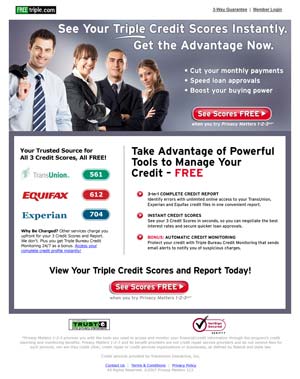Landing Page Optimization: Competitive Buying Modality
This is the second post in a series on Lading Page Optimization and Buyer Modalities. In the first post, I gave a very brief intro to the concept of buyer modalities, and today I’d like to dig a little deeper into the Competitive Buying Modality.
As mentioned in part 1, the Competitive Buyer Modality is focused on how or why your product is the best, but more importantly how it can make them the best. They are looking for a way to “one-up” the competition. They tend to be very goal-oriented, and are usually very aware of their problem (in which your product hopefully can solve). They also can be a little skeptical about claims, but sometimes that can work for you, since they also believe they can overcome any obstacle.
I think a great way to look competitive geared advertising would be in reference to sports equipment (hit the ball farther, run faster, exercise longer, etc). Obviously most sports are competitions, so it’s smart to believe that sports enthusiasts would respond well to this type of advertising. That’s not to say all sports related products do (or should) use competitive buyer modality advertising, it’s just that there are great examples, and help to define the competitive buyer.
The Marketsense blog from appliedproductmarketing.com has some great tips on appealing to the competitive buyer:
Appeal: Drawn to superiority. Want to understand what makes your product the best.
Website: Provide proof of your competitive advantages. Demonstrate your credibility.
Information Needs: Answer questions on how your product is the better choice. Provide rational options. Share proof points.
Understand: What makes your product the best solution. They will take an analytical, logical approach.
Process: Will work through the process as efficiently as possible. They will disregard steps that waste time and resources. Let them drive. Don’t get in their way.
Time: They will work quickly with absorption. Because they hate inefficiency, quickly deliver what they need.
Risk: Are willing to take risk. Confident in themselves to ultimately solve the problem.
Decision: Want to know they have selected the best solution for the job. Will want to reach this decision quickly and efficiently.
Bringing it back to the project I mentioned in Part 1, here is an example of the solution the creative team I was working with came up with geared to the competitive buyer modality (click to enlarge):
The product offering is a credit report monitoring service, and typically, the customers were spontaneous buying modality, so there was a slight challenge to this project… Appeal to the competitive buyer modality without alienating the spontaneous buyer. So, while this project wasn’t 100% geared to the competitive buyer, there are some elements that we hoped would appeal to this type of customer.
1. Chose a colder, but strong color palette, with a very strong, bold color for the CTA
2. Strong competitive messaging with terms such as advantage, cut, speed and boost.
3. Hero image of successful looking business people, matched with “competitive edge” type messaging. This imagery was very important, as this being a financial product, the imagery is happy, good-looking business people to imply that this product can help you succeed.
4. Messaging box for “Why be charged?” implying that you are getting something that others pay for. Competitive Buyers can also be competitive with how much something costs, and getting something for less than someone else can be important. However, on the flip side, competitive buyers can also equate price with status (i.e. most expensive = best), so it’s important to test price messaging with any buyer modality.
Again, these were changes we worked into our control pages in hopes to appeal to a broader audience. Unfortunately, it was hard for us to gauge the success or failure of this particular page since the driver to this page wasn’t always accurately matched up, but on the plus side, we did not see a huge negative impact which is always important. Given adequate testing through a full campaign (banner/text ad, lp, ad placement, etc.) there is a lot of potential to target the comopetitive market.
I hope you found this post helpful, and hopefully it gives you some ideas of how to differentiate your creatives to appeal to a broader audience. Up next will be a closer look at the Humanistic Buyer Modality, and hopefully you’ll come back to read more.





